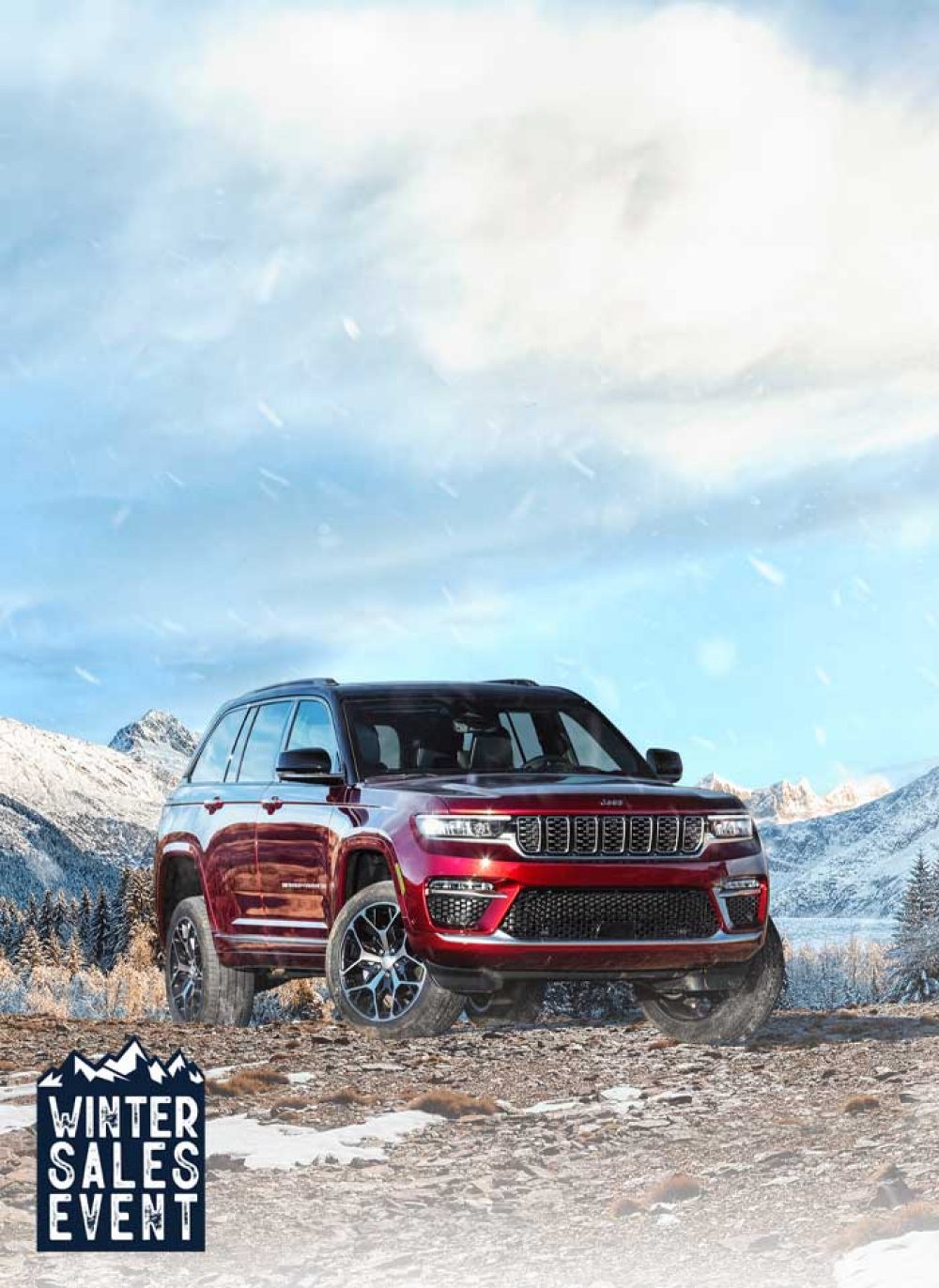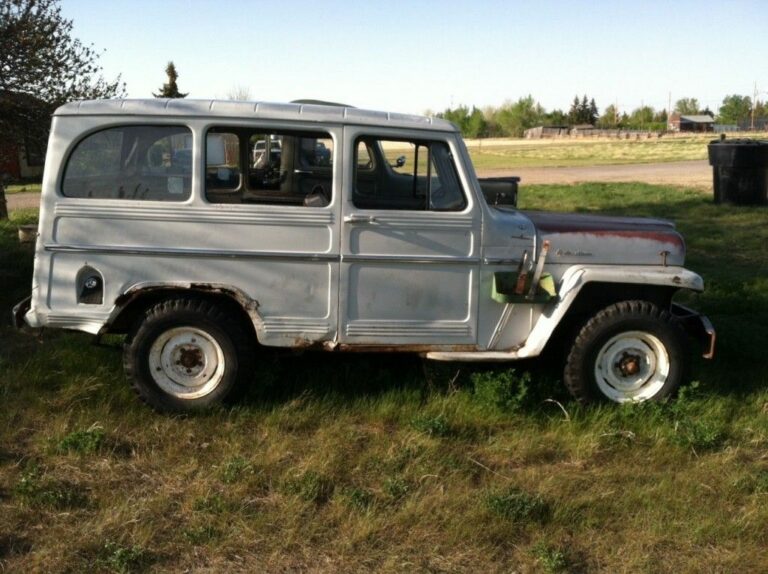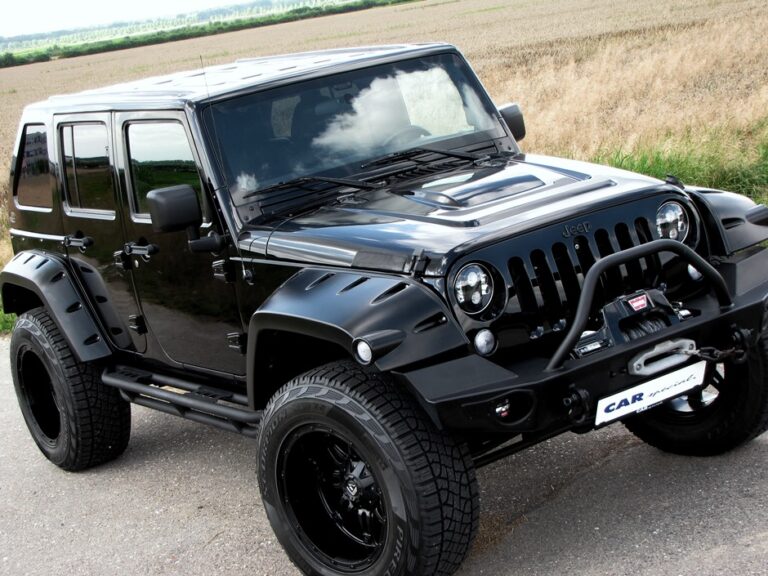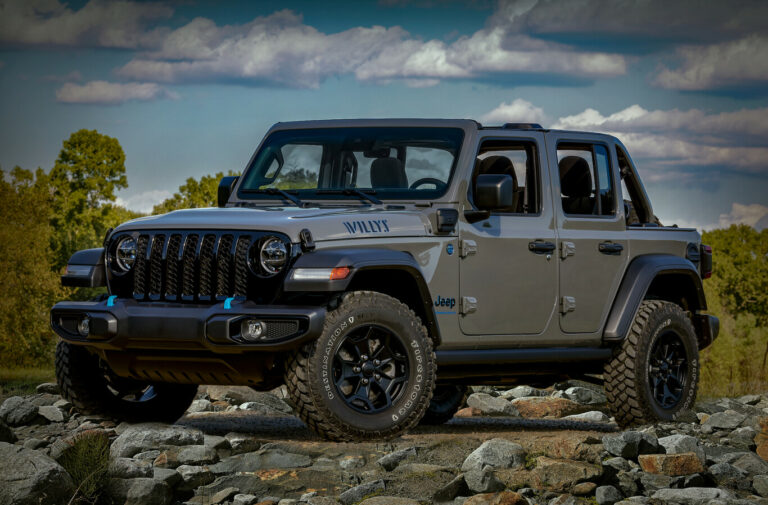Jeep JK Rubicon Axles For Sale: The Ultimate Upgrade Guide
Jeep JK Rubicon Axles For Sale: The Ultimate Upgrade Guide jeeps.truckstrend.com
The Jeep Wrangler JK, produced from 2007 to 2018, is renowned for its off-road prowess and modular design. While Sport and Sahara models offer a fantastic starting point, serious off-road enthusiasts often seek to enhance their rig’s capabilities. One of the most impactful and sought-after upgrades is the installation of Jeep JK Rubicon axles. These factory-equipped Dana 44 axles, front and rear, are widely considered the gold standard for JK owners looking to significantly boost durability, traction, and overall off-road performance without breaking the bank on custom aftermarket solutions.
This comprehensive guide will delve into everything you need to know about finding, evaluating, and installing "Jeep JK Rubicon Axles For Sale," helping you make an informed decision and transform your Wrangler into an even more formidable trail machine.
Jeep JK Rubicon Axles For Sale: The Ultimate Upgrade Guide
Understanding the JK Rubicon Axles: The Gold Standard
At the heart of the Rubicon’s legendary capability are its robust axles. Unlike the Dana 30 front and Dana 44 rear found in Sport and Sahara models, the Rubicon boasts Dana 44 axles both front and rear. But it’s not just the name that matters; it’s the specific features that make them so desirable:
- Dana 44 Front Axle: This is the most significant upgrade. Compared to the Dana 30, the Rubicon’s front Dana 44 features a larger ring and pinion, thicker axle tubes, and stronger inner axle shafts. It’s a high-pinion design, which improves driveshaft angles and offers better strength under load in a front application.
- Dana 44 Rear Axle: While Sport/Sahara models also have a rear Dana 44, the Rubicon version typically includes a stronger housing and, crucially, the integrated electronic locker.
- Electronic Lockers (Tru-Lok): Both front and rear Rubicon axles come equipped with factory electronic lockers. These allow the driver to electronically lock the differential, forcing both wheels on an axle to spin at the same speed, providing maximum traction in challenging terrain.
- Gearing Options: Rubicon axles commonly come with lower gear ratios, typically 4.10:1 (standard for manual transmissions and some automatics) or 3.73:1. These lower gears are ideal for compensating for larger tires, restoring lost power and improving crawl ratio for off-road obstacles.
- Bolt-On Compatibility: For JK owners, these axles are a direct bolt-on replacement, meaning minimal fabrication is required, saving time and money compared to custom axle swaps.

Benefits of Upgrading to Rubicon Axles
Investing in Rubicon axles offers a multitude of advantages for your JK:

- Enhanced Off-Road Capability: The integrated electronic lockers are a game-changer. With the flick of a switch, you gain unparalleled traction, allowing you to conquer obstacles that would leave open-differential Jeeps stuck.
- Increased Durability and Strength: The beefier Dana 44 front axle and stronger components throughout both axles significantly increase their resistance to bending, breaking, and wear, especially when running larger tires (35-inch and up) and tackling tougher trails.
- Optimized Gearing: The common 4.10 gearing in Rubicon axles is often a perfect match for 35-inch tires, restoring power, improving fuel economy (compared to running large tires on stock gears), and enhancing low-speed control for crawling.
- Cost-Effectiveness vs. Aftermarket: While high-end aftermarket axles (like Dana 60s) offer ultimate strength, they come at a premium. Used Rubicon axles provide a substantial upgrade in strength and capability at a fraction of the cost, making them an excellent value proposition for most serious enthusiasts.
- Direct Bolt-On Fit: For any JK owner (Sport, Sahara, X), Rubicon axles are a straightforward swap. This means less downtime, lower labor costs if professionally installed, and no complex fabrication.
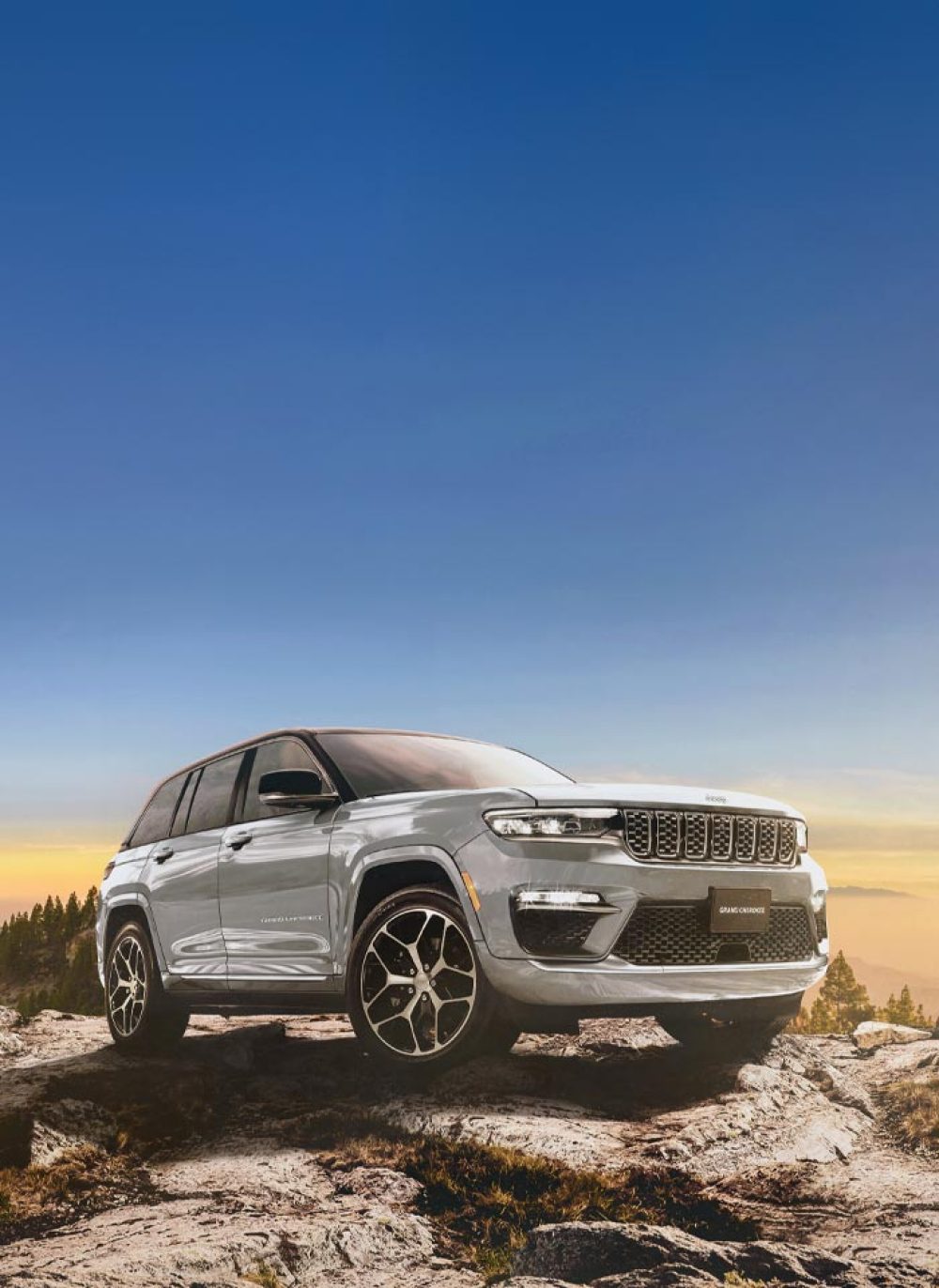
Where to Find Jeep JK Rubicon Axles For Sale
Finding a good set of used Rubicon axles requires patience and knowing where to look:
- Online Marketplaces: Craigslist, Facebook Marketplace, and eBay are prime hunting grounds. Search local listings first to avoid shipping costs.
- Jeep-Specific Forums & Facebook Groups: Dedicated JK Wrangler forums (e.g., JK-Forum.com) and Facebook groups (e.g., "Jeep JK Parts For Sale") are excellent resources. Many enthusiasts upgrade to even stronger axles and sell their Rubicon take-offs.
- Salvage Yards & Auto Recyclers: Large salvage networks like LKQ sometimes have Rubicon Wranglers that have been totaled, offering a chance to acquire complete axles.
- Off-Road Shops & Installers: Some shops that specialize in Jeep modifications may take Rubicon axles on trade or offer refurbished sets for sale.
- Word of Mouth: Let your local Jeep club or off-road community know you’re looking.
Important Considerations Before Buying
Purchasing used axles requires careful inspection and due diligence to ensure you’re getting a worthwhile investment:
- Condition is Paramount:
- Straightness: Visually inspect axle tubes for any signs of bending or damage. A bent axle tube can lead to alignment issues and premature wear.
- Leaks: Check for fluid leaks around the differential cover, pinion seal, and axle seals. Minor leaks can indicate worn seals.
- Ball Joints (Front): Grab the top and bottom of the tire (if mounted) and try to rock it. Any significant play indicates worn ball joints, which will need replacement.
- Unit Bearings (Front): Check for play or grinding noises when spinning the hub.
- Knuckles/C’s (Front): Inspect for cracks or damage, especially if the Jeep was heavily used off-road.
- Differential Covers: Look for signs of heavy impacts or cracks.
- Gearing Verification: Confirm the gear ratio (e.g., 4.10 or 3.73) in both axles. It’s critical that the front and rear ratios match exactly. Look for tags on the differential covers or open the cover to visually inspect the gear markings.
- Locker Functionality & Wiring: Inquire about the condition of the electronic lockers. Can the seller demonstrate they engage? If not, assume they might need service. Ensure the locker wiring harnesses are included and undamaged; otherwise, you’ll need to purchase aftermarket ones.
- Completeness: Determine what’s included. Are calipers, rotors, steering components (tie rod, drag link), or driveshafts part of the deal? A more complete axle assembly might cost more upfront but save you money on additional parts.
- Mileage and Usage: High mileage or heavy off-road use can indicate more wear on internal components.
- Shipping Logistics: Axles are heavy and bulky. Local pickup is almost always preferred to avoid significant freight shipping costs. If shipping, factor in crating and transport expenses.
- Price Negotiation: Be prepared to negotiate. Prices vary widely based on condition, completeness, and market demand.
Practical Advice and Actionable Insights
- Always Inspect in Person: If possible, never buy axles sight unseen. Bring a flashlight and a friend who knows Jeeps.
- Factor in Rebuild Costs: Even "good" used axles may benefit from new ball joints, seals, and fluid. Budget for these potential replacements.
- Verify Gearing Twice: An unmatched gear ratio between front and rear axles will destroy your transfer case when engaging 4WD.
- Consider a Truss/Gussets: If you plan on heavy off-roading or larger tires (37-inch+), consider reinforcing the front Dana 44 with a truss and C-gussets before installation.
- Don’t Forget the Wiring: The electronic lockers require specific wiring to the JK’s electrical system. Aftermarket plug-and-play harnesses are available, and you’ll need a programmer (like an AEV ProCal or Superchips Flashcal) to enable the locker function in your Jeep’s computer.
Installation Guide (Brief Overview)
While a detailed installation is beyond the scope of this article, here’s a general outline:
- Safety First: Use robust jack stands, disconnect the battery, and ensure the vehicle is stable.
- Disassembly: Remove wheels, brake calipers, rotors, driveshafts, sway bar links, track bar, and control arms. Disconnect ABS/locker wiring.
- Remove Old Axles: Carefully lower and remove the stock axles.
- Install New Axles: Position the Rubicon axles under the Jeep. Attach control arms, track bar, driveshafts, and sway bar links.
- Brakes & Wiring: Reinstall brake components, connect brake lines (bleed brakes afterward), and run the locker wiring harness.
- Fluid & Alignment: Fill differentials with new gear oil. After installation, a professional alignment is crucial.
- Locker Activation: Use a programmer to activate the locker function in your JK’s computer.
If you’re not comfortable with automotive mechanics, professional installation by a reputable off-road shop is highly recommended.
Common Challenges and Solutions
- Damaged Lockers: If a locker doesn’t engage, it could be a wiring issue, a faulty solenoid, or internal damage. Aftermarket locker repair kits are available, or consider swapping to air lockers (e.g., ARB) or cable lockers (e.g., OX).
- Bent Axle Tubes: Minor bends can sometimes be professionally straightened. Severe bends may require a new housing or a professional re-tubing service.
- Missing Wiring: Aftermarket locker wiring harnesses are readily available from companies like Rock Hard 4×4, GenRight, or others.
- Mismatched Gearing: If you find a great deal on a single axle but the gearing doesn’t match your existing one, you’ll need to re-gear one of them. This can be costly (several hundred dollars per axle) and requires specialized tools and expertise.
Jeep JK Rubicon Axles For Sale: Estimated Price Table
Prices for used Rubicon axles vary significantly based on condition, completeness, location, and market demand. This table provides estimated ranges for a general idea.
| Axle Component | Condition | Included Components | Estimated Price Range (USD) | Notes |
|---|---|---|---|---|
| Front Dana 44 | Good Used | Housing, shafts, locker, gears, knuckles, unit bearings | $1,200 – $2,000 | May need new ball joints, seals. Often no brakes/steering. |
| Rear Dana 44 | Good Used | Housing, shafts, locker, gears, rotors, calipers | $1,000 – $1,800 | May need new seals. |
| Pair (F&R) | Good Used | Both axles complete, matched gears, some wiring | $2,500 – $4,000 | Best value, but harder to find. Often requires full vehicle teardown. |
| Front Dana 44 | Rebuilt/Low Mi. | Housing, new shafts, new locker, new gears, all new wear parts | $2,500 – $3,500 | Professionally rebuilt, often with upgraded components. |
| Rear Dana 44 | Rebuilt/Low Mi. | Housing, new shafts, new locker, new gears, all new wear parts | $2,200 – $3,200 | Professionally rebuilt, often with upgraded components. |
| Pair (F&R) | Core/Damaged | Housing, some internals, needs full rebuild | $800 – $1,500 | For experienced builders, significant repair costs. |
| Optional/Add-on Costs: | ||||
| Locker Wiring Harness | New | Aftermarket plug-and-play kit | $150 – $300 | Essential for activating lockers on non-Rubicon JKs. |
| Flashcal/ProCal | New | Recalibrate speedo, enable locker function | $150 – $250 | Necessary for proper vehicle function after install. |
| Ball Joint Kit | New | Full replacement for front axle | $150 – $350 | Highly recommended for any used front axle. |
| Unit Bearings | New | Front axle wheel bearings (per side) | $100 – $200 | Good to replace while apart. |
| Shipping Costs | Freight | Varies greatly by distance. Local pickup is ideal. | $300 – $800+ | Heavy and bulky items. |
| Professional Install | Labor | If you’re not doing it yourself. | $800 – $1,500+ | Varies by shop and region. |
Frequently Asked Questions (FAQ)
Q: Why upgrade to Rubicon axles instead of aftermarket axles?
A: Rubicon axles offer a significant strength and capability upgrade over Sport/Sahara axles at a much lower cost than high-end aftermarket options. They are also a direct bolt-on for JK models, simplifying installation.
Q: Are Rubicon axles strong enough for 40-inch tires?
A: While some heavily reinforced Rubicon Dana 44s can run 40s, it’s generally pushing their limits, especially in aggressive off-roading. For serious use with 40-inch tires, many recommend upgrading to Dana 60s or larger.
Q: Do I need to re-gear if I install Rubicon axles?
A: You only need to re-gear if the Rubicon axles’ ratio doesn’t match your existing axle (if only replacing one) or if the ratio isn’t suitable for your tire size. Rubicons typically come with 3.73 or 4.10 ratios, which are good for 35-inch tires.
Q: How do I wire the electronic lockers on my non-Rubicon JK?
A: You’ll need an aftermarket wiring harness designed for JK Rubicon lockers. These plug into the axle’s solenoid and provide power and control. Additionally, you’ll need a programmer (like an AEV ProCal or Superchips Flashcal) to enable the locker function in your Jeep’s computer.
Q: What should I prioritize when inspecting used axles?
A: Straightness of the axle tubes, absence of significant fluid leaks, and functionality of the electronic lockers are key. Also, check for excessive play in ball joints and unit bearings.
Q: Can I install Rubicon axles myself?
A: Yes, if you have a good understanding of automotive mechanics, the necessary tools (including a torque wrench and proper lifting equipment), and preferably a helper. If not, professional installation is recommended.
Q: What’s the difference between the front and rear Dana 44s in a Rubicon?
A: The front JK Rubicon Dana 44 is a high-pinion (reverse cut) design, which improves driveshaft angles and strength for a front axle. The rear is a standard low-pinion design. Both come with electronic lockers.
Conclusion
Upgrading to Jeep JK Rubicon axles is one of the most effective and popular modifications for Wrangler owners seeking to significantly boost their vehicle’s off-road performance and durability. By offering stronger components, lower gearing options, and integrated electronic lockers, these factory axles provide a robust and direct bolt-on solution. While the search for the perfect set requires patience and a keen eye for detail, the reward is a Jeep that’s far more capable and ready to tackle even the most challenging trails. With careful inspection, smart purchasing decisions, and proper installation, your JK will be transformed into an even more formidable and reliable off-road machine, ready for your next adventure.
